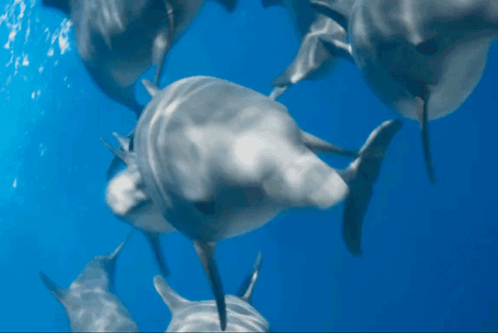Challenge #3:
The World of
Underwater Robots
Congratulations! You are almost halfway through completing all of the challenges.
Let’s embark on a virtual underwater adventure. We have added a little creative, simulated underwater activity to our Future New Worlds Tour. Are you ready to dive right in🐠🪸
The ocean is a magnificent place filled with mysteries. Discovering more about enchanting water creatures and beautiful coral reefs is important to protecting our planet's health.
However, exploring underwater is not easy. It’s cold, requires a lot of time and effort and not always the safest place to be in.
Although we cannot swim like mermaids, we can use other ways to explore the deep blue ocean. One of them is by using underwater drones. 🐠🪸
Did you know?
Meet Hydrus - Advanced Navigation’s underwater robot who can swim around and explore the ocean at its will!
What is an underwater drone?
An underwater drone is a robot that can travel underwater by itself without any cords attached to it. Before it goes into the water, people on land use a computer to tell it what to do.
Then, once they drop the robot into the water, it can follow the instructions and do things like creating a map of the seafloor, calculating how warm the water is or finding new fish species.
The cool part is, the robot is so smart that it can think for itself underwater and doesn’t need anyone to control it while it does its job. So, people can stay on the shore and wait for it to come back when it’s done with its underwater adventures!! 🐠🪸

>>>>>>> In this challenge, you will learn how to think and act like an underwater drone based on commands you receive from a friend - without any talking involved!
What you will need:
🪸Access to a space and pretend you’re in a kelp field
🪸A buddy (to act as your ‘commander’). It could be a friend or family member
🪸A gestures reference guide (available here), a pen and a bowl
🪸About 5 different objects that can act as ‘treasures from the bottom of sea’ that you can describe with gestures (such as a pen, an eraser, a drink bottle, a calculator etc.- anything you can pick up in your hand)
Before you start, prepare with your buddy:
Working with your buddy, create hand movements that can serve as ‘commands’. Then write them down in your reference guide. Try to memorise the hand movements and meanings. You can be as creative as you’d like. Here are some examples.
Hand movement
Point your finger to the right
Point your finger to the left
Draw a big circle with your finger
Touch your forehead twice
Raise three fingers
Form an ‘L’ shape with your fingers
Meaning
Move an object towards the right
Move an object towards the left
Put an object in the bowl
Take 2 objects out of the bowl
Move 3 objects into the bowl
Stop and wait for commands
How to play:
Have your objects available in front of you. Give your buddy the guide.
Using the guide, have your buddy gesture a hand movement.
Note: Make sure you can’t see the guide at this time, because technically, you are now pretending to be an underwater drone that has been ‘programmed’ to memorise what the hand gestures mean!
Once your buddy finishes the gesture, try to remember what the movement was and perform the action. (For example, if your buddy draws a big circle with their finger, then the mission is to ‘take out an object from the bowl’)
Try this until you have gone through all of the hand gestures and you’ve remembered the action for each gesture.
Learning: This is similar to how we program robots. By repeatedly giving the robot a specific message, the robot can understand exactly how to complete its mission.
**Tip: If you are unsure about a hand gesture, you can always ask your buddy to repeat it or slow down.
Ready for something more challenging?
How about a treasure hunt? Here’s how to set it up:
Your buddy must come up with new gestures to represent each object without your input. These gestures should ideally be related to the ‘treasures’ (for example, pretending to write refers to the pen or tapping the table refers to the calculator).
Ask your buddy to add the new gestures into the reference guide, this time without showing or telling you what they mean.
Your buddy will now perform 2 gestures. The first gesture refers to the object and the second gesture refers to the action (for example, the first gesture is pretending to write and the second gesture is pointing to the left. Yes, you guessed it!!! Move the pen to the left). Because you don’t have prior knowledge of their meanings, you must try to guess what the mission is.
It is now your turn to carry out the mission. Do 3-5 rounds. Once you’re done, check with your buddy to see if you’ve performed all the missions correctly.
**Tip: The more gestures your buddy adds, the more fun and challenging the mission.
>>>>>> Learning: This is similar to how underwater drones use artificial intelligence to successfully locate and identify an object underwater. In real life, it could be a group of starfish or a coral reef.
Reflections: what have you learned?
🐠🪸What is artificial intelligence?
Artificial Intelligence is an incredibly smart computer that can learn how to solve problems all on its own, similarly to how we solve problems using our brain.
🪸🐠Why do we use underwater drones to explore the ocean?
Underwater drones are a revolutionary technology that can help us understand what’s going on in the underwater world, without needing us to go down there ourselves. Using artificial intelligence, they can perform a number of clever tasks, such as mapping the seafloor, identifying and classifying marine life species, taking photos and videos and much more.
🐠🪸Why is learning about the ocean important?
The ocean covers 70% of our Earth and is a critical part of our lives. The more we learn about it, the better we can manage, conserve and protect it as well as the wonderful sea life that lives in it.
>>>>> Time Capsule ⏳
Share your work with us!
Get your buddy or family member to take photos or a video of you completing the challenge for a chance to win a special prize from Advanced Navigation (see below).
To enter, email your footage and photographs to hello@gdostem.com.au. Remember to put Advanced Navigation Challenge # 3 in the subject line. Be sure you get your parent/guardian’s permission before sharing anything.
Once you’ve sent in your work, you’ll be entered into the draw for the cool prizes listed below!!

>>>>> Back to the Future Bonus Question 🛟
Explain what you achieved in this challenge to your parents/grandparents/guardian. What did you like best and what did they like best???🦈🪸🦑🌊
>>>>> Have your voice heard📣
How important to you is keeping our oceans clean?
Where 10 is the most important and 1 is the least important.
Advanced Navigation Prizes: woohoo!!🏆
Sphero RVR+ Programmable Robot
The Sphero RVR+ Programmable Robot is super fun to drive and customise. Using the free Sphero Edu App, you can code it to perform many different tasks, such as driving in a straight line, or recognising different colours on the way!
The robot comes assembled already, so you can drive it straight out of the box. If you are a beginner, this is the perfect opportunity to learn the basics of coding and computer science. If you are a bit more experienced, feel free to unleash your creativity!
JohnCo Stanley 3 in 1 Keypad Coding Robot
JohnCo Stanley 3 in 1 Keypad Coding Robot, or simply Stanley, lets you DIY it to turn it into a Shooter, Doodler or Sweeper!
Simply press the buttons on Stanley’s head and watch it perform various activities. Whether it is drawing a circle or sweeping up the floor, you can enjoy the fun of keypad coding and giving ‘commands’ to your little robot friend.
Easier and smarter than you would expect, Stanley is the perfect choice for your very first STEM coding robot. Building, learning and programming robots has never been more exciting!





















